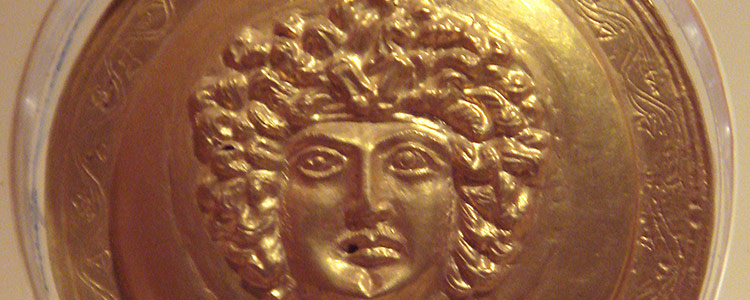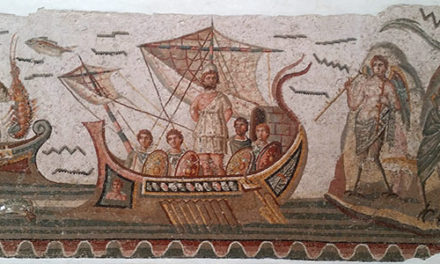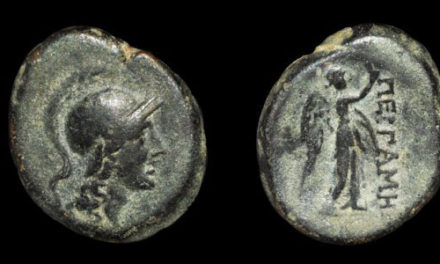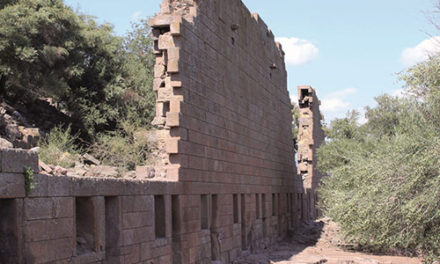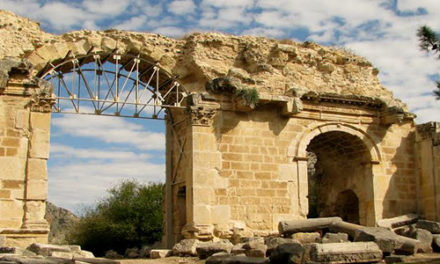Location: Central Anatolia
State existed: 280–64 BC
Roman province: Galatia
Ancient region of Anatolia, named for the Galatians, a Gallic people from Europe who settled here in the early 3rd century BC. The region lies in the basins of the present-day Kizil Irmak and Delice Irmak (rivers), on the great central plateau of Turkey. Galatia possesses some expanses of fertile soil, but most of the land is suitable only for pasturing the large flocks of sheep and goats raised here. In addition to the Gauls, many Greeks settled in the region, and it eventually became Hellenized; the inhabitants, therefore, were often referred to as Gallo-Graeci. Dominated by Rome through regional rulers from 189 BC, Galatia and adjacent regions became a Roman province in 25 BC. It was conquered by the Seljuks in the 11th century AD. Paul the Apostle visited Galatia and addressed his Epistle to the Galatians to several churches here.
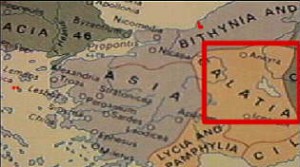 Ancient Galatia was an area in the highlands of central Anatolia in modern Turkey. Galatia was named for the immigrant Gauls from Thrace (cf. Tylis), who settled here and became its ruling caste in the 3rd century BC, following the Gallic invasion of the Balkans in 279 BC. It has been called the “Gallia” of the East, Roman writers calling its inhabitants “Galli” (“Gauls”). Galatia was bounded on the north by Bithynia and Paphlagonia, on the east by Pontus and Cappadocia, on the south by Cilicia and Lycaonia, and on the west by Phrygia. Its capital was Ancyra (i.e. Ankara, today the capital of modern Turkey).
Ancient Galatia was an area in the highlands of central Anatolia in modern Turkey. Galatia was named for the immigrant Gauls from Thrace (cf. Tylis), who settled here and became its ruling caste in the 3rd century BC, following the Gallic invasion of the Balkans in 279 BC. It has been called the “Gallia” of the East, Roman writers calling its inhabitants “Galli” (“Gauls”). Galatia was bounded on the north by Bithynia and Paphlagonia, on the east by Pontus and Cappadocia, on the south by Cilicia and Lycaonia, and on the west by Phrygia. Its capital was Ancyra (i.e. Ankara, today the capital of modern Turkey).
Seeing something of a Hellenized savage in the Galatians, Francis Bacon and other Renaissance writers called them “Gallo-Graeci“, “Gauls settled among the Greeks” and the country “Gallo-Graecia”, as had the 3rd century AD Latin historian Justin. The more usual term in Antiquity is Ἑλληνογαλάται (Hellēnogalátai) of Diodorus Siculus’ Biblioteca historica v.32.5, in a passage that is translated “…and were called Gallo-Graeci because of their connection with the Greeks”, identifying Galatia in the Greek East as opposed to Gallia in the West.
In fact, we do not know what the Galatians called themselves or their tribes because they were illiterate. Roman authors Latinized all names.The Galatians were in their origin a part of the great Celtic migration which invaded Macedon, led by Brennus. The original Celts who settled in Galatia came through Thrace under the leadership of Leotarios and Leonnorios circa 270 BC. Three tribes comprised these Celts, the Tectosages, the Trocmii, and the Tolistobogii.
The invaders came at the invitation of Nicomedes I of Bithynia, who required help in a dynastic struggle against his brother. Three tribes crossed over from Thrace to Asia Minor. They numbered about 10,000 fighting men and about the same number of women and children, divided into three tribes, Trocmi, Tolistobogii and Tectosages. They were eventually defeated by the Seleucid king Antiochus I, in a battle where the Seleucid war elephants shocked the Celts. While the momentum of the invasion was broken, the Galatians were by no means exterminated. Instead, the migration led to the establishment of a long-lived Celtic territory in central Anatolia, which included the eastern part of ancient Phrygia, a territory that became known as Galatia. There they ultimately settled, and being strengthened by fresh accessions of the same clan from Europe, they overran Bithynia and supported themselves by plundering neighbouring countries. The Gauls invaded the eastern part of Phrygia on at least one occasion.
The constitution of the Galatian state is described by Strabo: conformably to custom, each tribe was divided into cantons, each governed by a chief (‘tetrarch’) of its own with a judge under him, whose powers were unlimited except in cases of murder, which were tried before a council of 300 drawn from the twelve cantons and meeting at a holy place, twenty miles southwest of Ancyra, called in Greek Drynemeton. It is likely it was a sacred oak grove, since the name means “sanctuary of the oaks” (from drys, meaning “oak” and nemeton, meaning “sacred ground”). The local population of Cappadocians were left in control of the towns and most of the land, paying tithes to their new overlords, who formed a military aristocracy and kept aloof in fortified farmsteads, surrounded by their bands.
These Celts were warriors, respected by Greeks and Romans . They hired themselves out as mercenary soldiers, sometimes fighting on both sides in the great battles of the times. For years the chieftains and their war bands ravaged the western half of Asia Minor, as allies of one or other of the warring princes, without any serious check, until they sided with the renegade Seleucid prince Antiochus Hierax, who reigned in Asia Minor. Hierax tried to defeat king Attalus I of Pergamum (241–197 BC), but instead, the Hellenized cities united under his banner, and his armies inflicted several severe defeats upon them, about 232 forcing them to settle permanently and to confine themselves to the region to which they had already given their name. The theme of the Dying Gaul (a famous statue displayed in Pergamon) remained a favorite in Hellenistic art for a generation.
The king of Attalid Pergamene employed their services in the increasingly devastating wars of Asia Minor; another band deserted from their Egyptian overlord Ptolemy IV after a solar eclipse had broken their spirits.
In the early 2nd century BC, they proved terrible allies of Antiochus the Great, the last Seleucid king trying to regain suzerainty over Asia Minor. In 189 BC, Rome sent Gnaeus Manlius Vulso on an expedition against the Galatians, the Galatian War. He defeated them. Galatia was henceforth dominated by Rome through regional rulers from 189 BC onward. Galatia declined and fell at times under Pontic ascendancy. They were finally freed by the Mithridatic Wars, during which they supported Rome.
In the settlement of 64 BC, Galatia became a client-state of the Roman empire, the old constitution disappeared, and three chiefs (wrongly styled “tetrarchs”) were appointed, one for each tribe. But this arrangement soon gave way before the ambition of one of these tetrarchs, Deiotarus, the contemporary of Cicero and Julius Caesar, who made himself master of the other two tetrarchies and was finally recognized by the Romans as ‘king’ of Galatia.
BIBLICAL CONNECTION
During his second missionary journey, Paul of Tarsus, accompanied by Silas and Timothy (Acts 16:6), visited the “region of Galatia,” where he was detained by sickness (Galatians 4:13).
Josephus related the biblical figure Gomer to Galatia (or perhaps to Gaul in general). “For Gomer founded those whom the Greeks now call Galatians, [Galls,] but were then called Gomerites.” Antiquities of the Jews, I:6. Although others have related Gomer to Cimmerians.
The Galatians were still speaking the Galatian language (Gaulish) in the time of St. Jerome (347–420 AD), who wrote that the Galatians of Ancyra and the Treveri of Trier (in what is now the German Rhineland) spoke the same language (Comentarii in Epistolam ad Galatos, 2.3, composed c. 387).

